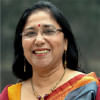Children are to be nurtured, not tortured

Many societies have their own sources of shame. Genital mutilation, honour killing, sexual abuse of children in religious institutions—there are many such practices that go against all norms of a civilised and humane society. What is ours? I can think of at least two: child marriage and child labour. I call them shame as both are condoned and enjoy social acceptance, yet violate the fundamental principles of human rights and dignity—the right to a life of freedom and security.
The IGI Global, which conducted research on child labour with the support of the International Labour Organization (ILO), estimates that there are 420,000 child domestic workers in Bangladesh, of whom 83 percent are female, and 132,000 work in Dhaka city.
The government has committed to phase out child labour in Bangladesh and enacted a policy to this end in 2010, and issued an order in 2013 prohibiting all children under 18 years of age from working in 38 identified hazardous jobs. However, there is no implementation of this regulation as children continue to work in hazardous and dangerous situations, such as welding, in biri factories, as helpers in human hauliers, stone-cutting, etc. As for domestic work, it did not even make it to the list of hazardous work. Child rights experts, on the other hand, say that child domestic workers are particularly vulnerable as their work is inside people's homes and evades scrutiny from the authorities or those children's families. It is unregulated and unmonitored, leaving children at the total mercy of their employers. Parents with low income hand over their children, often as young as eight, to work in middle- or lower middle-class households in the hope that they will be looked after, at least get better nutrition, and also contribute to their families' income.
Alas! Contrary to their expectations, domestic child workers face regular abuse and neglect. The abuse ranges from overwork, insufficient food, no recreation or education, etc to unspeakable torture such as sexual violence, severe beating, starvation, burning, scalding with hot water and so on—sometimes resulting in death.
As per reports compiled by rights organisations such as Ain o Salish Kendra (ASK), Manusher Jonno Foundation (MJF), Bangladesh Shishu Adhikar Forum, etc. in the last five years, at least 200 child domestic workers were found dead in their employers' homes. Meanwhile, 365 were tortured physically, and 62 girls were sexually abused. In 2020-2021, as per reports compiled by MJF from six newspapers, 44 child domestic workers were victims of torture, of whom 16 died, and four died by suicide. Unless there is severe injury or death, such cases are not reported, nor are criminal cases filed. Only 30 percent of the cases of such torture are filed, with no known example of perpetrators ever getting punished for such heinous crimes against children.
The recent case of Farzana, a domestic worker aged 17 years, employed by a banker's family in Kalabagan, Dhaka revealed that physical and mental abuse can continue for years without anyone knowing about it. She suffered continuous torture for seven years, after which she finally sought help. Her entire body shows marks of old and new wounds. She is now lying at a hospital, undergoing treatment. Her parents have filed a criminal case, but the perpetrator is already out on bail.
This is not a one-off incident. We read about such inhuman acts inflicted by members of the so-called educated or elite class on their domestic helps every so often. In November last year, little Tania, an eight-year-old child from Fulbaria, Mymensingh, was found with blade cuts all over her body. Daughter of a poor tea seller, she was hired as a household help for a monthly salary of Tk 1,000. A criminal case was filed, but again the perpetrators are out on bail. Last year, the 44 reported cases of torture inflicted on child domestic workers all tell the same story of brutal assault, starvation, scalding with hot water and iron, and so on. Medical help was given only when the child faced imminent death. Criminal cases were filed against some, but no one has faced any punishment for their act of such extreme cruelty.
Reports of suicide or attempted suicide by adolescent female domestic workers are common. Most are found hanging from the ceiling fan. Investigation into the cause of suicide is mostly inconclusive without enough evidence to file criminal cases. There is, however, strong suspicion of sexual assault by male employers.
As is obvious, the unreported cases outnumber the reported ones. No one takes notice unless the torture is severe, and the victim lands in a hospital or is dead. Cries for justice go in vain. Not a single perpetrator accused of torturing domestic help has ever been convicted. Being economically solvent, perpetrators are able to prevent cases from being filed or negotiate with the victims' families, who are too poor and powerless to continue with the cases and usually agree to out-of-court settlement.
The government has committed to eliminate all hazardous work by children by 2024 and completely eliminate child labour by 2030. By all standards, setting a deadline that is years away indicates the lack of urgency in implementing any system or policies that will end child labour soon. In the meantime, children continue to fall prey to predator employers, who think they own them and can do whatever they want.
What can we do to make child labour socially unacceptable? What kind of campaign will result in putting to shame those who employ children and mistreat them? The narrative that our socio-economic situation will not permit elimination of child labour has gone on for too long. But why should children pay the price of our inability to build a society where everyone's basic needs are met? When will children enjoy the fruits of our so-called middle-income country status?
The government should consider expanding the social safety net programmes for parents who are forced to send their children to work. An important first step is to address the invisibility of child domestic workers, because once they enter the homes of their employers, they lose all identity and often their parents are not allowed to visit them. They should be registered with the social welfare department, and given ID cards with a hotline number to call in case of emergency. The social welfare department can also organise spot visits on a trial basis to at least give the impression that there is a system in place to monitor how these children are being treated.
The other issue is that of justice. If the law is supposed to work for everyone, then how come not a single case filed against these cruel employers of child domestic workers has ever resulted in conviction? This has given the message that they will not be held to account, no matter what cruelty they perpetrate on these children.
But a more fundamental question is: What drives normal people to such acts of cruelty? How can people—couples with families—have such double standards of adoring and protecting their own children, but slap, pinch, or worse, starve and burn others' children with hot iron? I don't think we have the answer; perhaps this phenomenon needs further study.
Finally, many of us dream of the kind of society we want. Mine is the following: The mention of "child labour" is greeted with astonishment. "Child labour! What is that? How can the two words, child and labour, go together? The only words that can be associated with children are laughter, playfulness, naughtiness, and joy!"
Is this my wishful thinking, or can it be a reality some day?
Shaheen Anam is the executive director of Manusher Jonno Foundation (MJF).

 For all latest news, follow The Daily Star's Google News channel.
For all latest news, follow The Daily Star's Google News channel. 



Comments